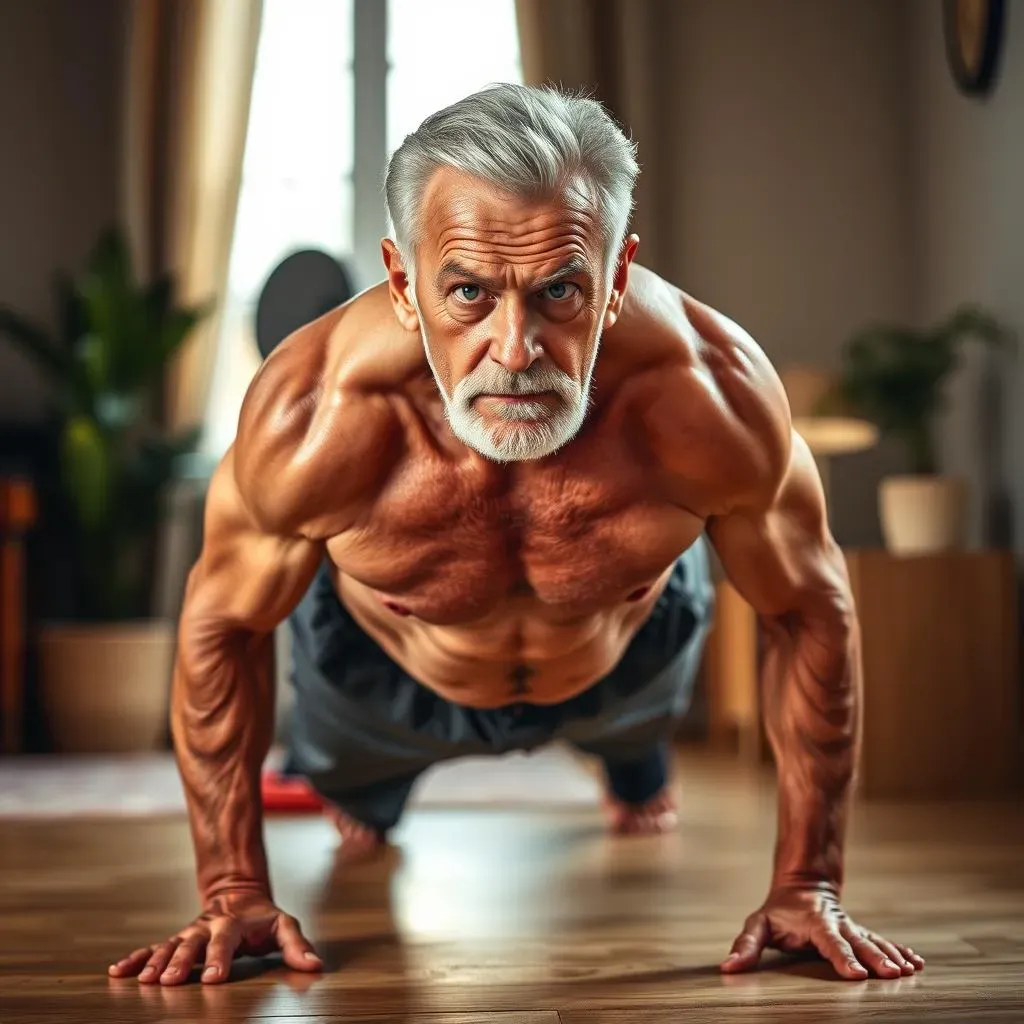Table of Contents
As we age, maintaining physical strength and mobility becomes increasingly important for overall health and independence. For a 70 year old man, incorporating calisthenics into his lifestyle can be a game-changer. Calisthenics, a form of exercise that uses body weight as resistance, is a low-cost and accessible way to build strength, improve flexibility, and boost cardiovascular health. In this article, we will explore the benefits of calisthenics for 70 year old men, discuss how to get started with low-impact exercises, and provide a sample workout routine tailored to seniors. Whether you're looking to improve your overall fitness or enhance your ability to perform daily activities, 70 year old man calisthenics offers a holistic approach to healthy aging. So, let's dive into the world of calisthenics and discover how it can help you stay strong, active, and independent well into your golden years.
Benefits of Calisthenics for 70 Year Old Man
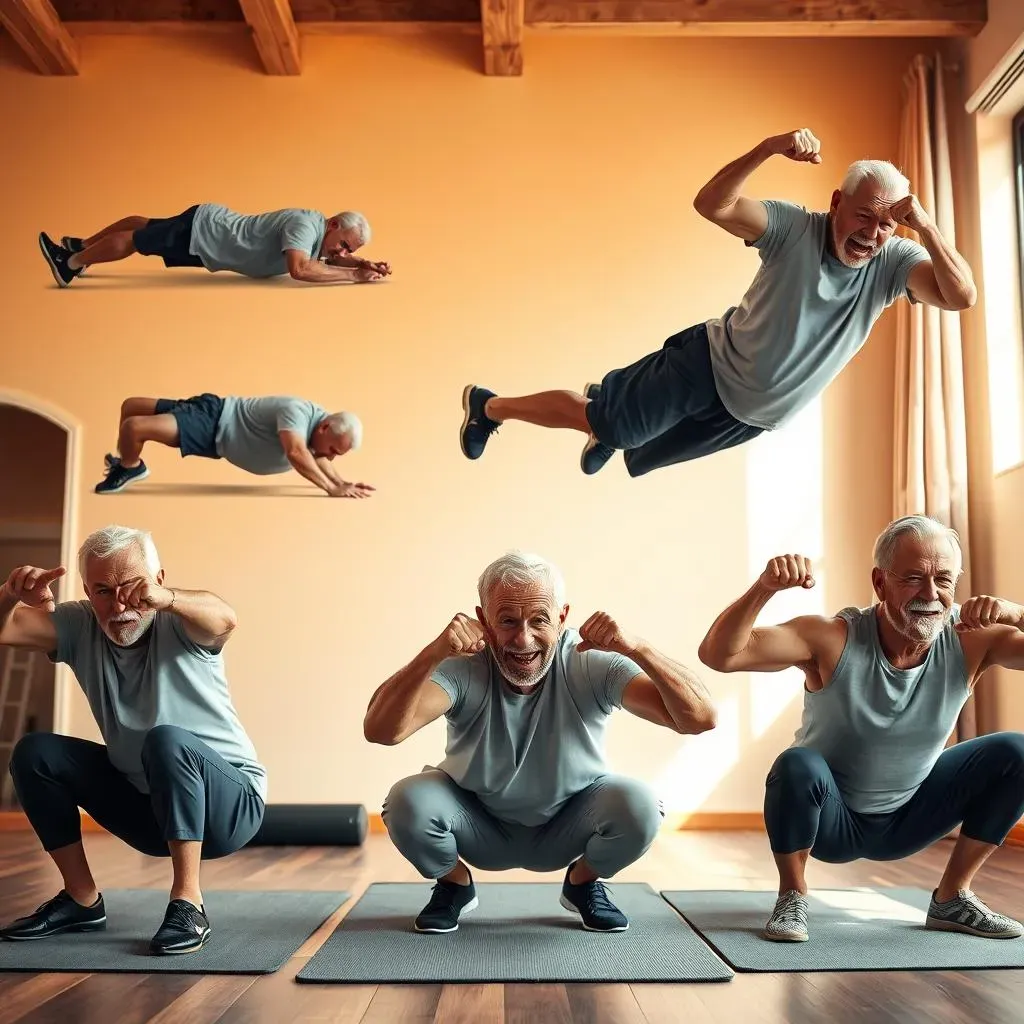
Benefits of Calisthenics for 70 Year Old Man
As we age, our bodies undergo natural changes that can impact our physical strength, flexibility, and overall health. For a 70 year old man, incorporating calisthenics into his lifestyle can have numerous benefits. Calisthenics is a form of exercise that uses body weight as resistance, making it a low-cost and accessible way to improve strength, flexibility, and cardiovascular health.
One of the primary benefits of calisthenics for seniors is its ability to counteract sarcopenia, a condition characterized by muscle loss and weakness that occurs as we age. Regular calisthenics exercises can help build muscle mass, improve bone density, and enhance functional independence, allowing seniors to maintain their ability to perform daily activities with ease.
Resistance training, such as calisthenics, can also help reduce the risk of osteoporosis, fractures, and joint pain. By strengthening the muscles and bones, calisthenics can improve overall health and reduce the risk of age-related diseases. Moreover, calisthenics can be modified to suit individual fitness levels, making it an ideal exercise option for seniors who may have mobility or health concerns.
Benefits | Description | Importance |
|---|---|---|
Improved Muscle Mass | Increases strength and reduces muscle loss | Enhances functional independence |
Enhanced Bone Density | Reduces risk of osteoporosis and fractures | Improves overall health |
Improved Cardiovascular Health | Enhances heart health and reduces disease risk | Improves overall well-being |
These benefits are not just theoretical; many seniors have seen significant improvements in their health and fitness after incorporating calisthenics into their lifestyle. For example, Sandra, an 84-year-old woman, credits calisthenics with helping her maintain her independence and mobility. She emphasizes the importance of muscle work, balance training, and socialization for healthy aging.
Calisthenics Exercises for Seniors: LowImpact Options
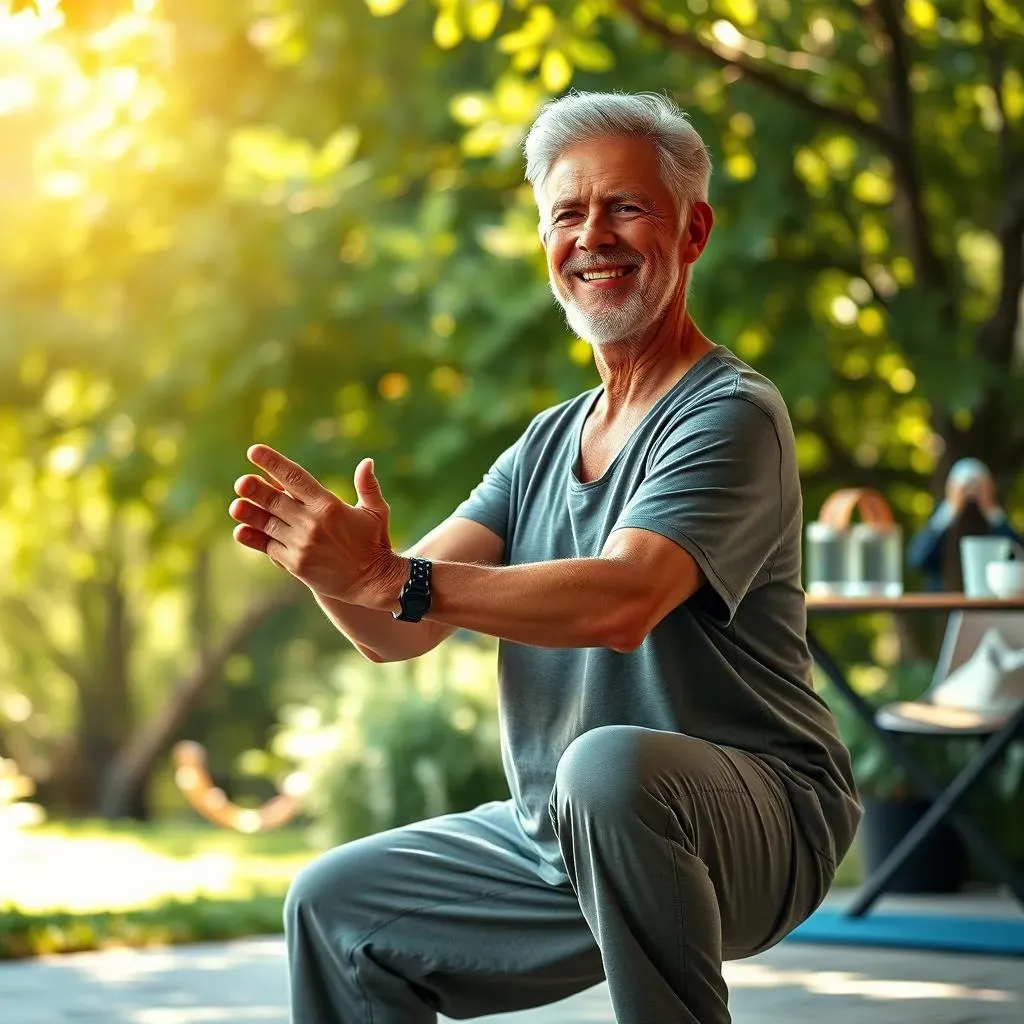
Calisthenics Exercises for Seniors: LowImpact Options
Getting Started with Low-Impact Calisthenics
For seniors, it's essential to start with low-impact calisthenics exercises that are easy on the joints and can be modified to suit individual fitness levels. Bodyweight squats, for example, are an excellent exercise for building leg strength without putting excessive strain on the joints. To perform a bodyweight squat, stand with your feet shoulder-width apart, then bend your knees and lower your body until your thighs are parallel to the ground. Push back up to the starting position and repeat for 10-15 repetitions.
Another low-impact exercise is the seated leg raise. This exercise targets the abdominal muscles and can be done while seated in a chair. Simply lift one leg off the ground, keeping it straight, and hold for a few seconds before lowering it back down. Repeat on the other side. This exercise helps improve balance and strengthens the core muscles.
Exercise | Description | Benefits |
|---|---|---|
Bodyweight Squats | Stand with feet shoulder-width apart, bend knees, and lower body | Builds leg strength, improves balance |
Seated Leg Raise | Lift one leg off the ground while seated, hold, and lower | Strengthens core, improves balance |
Progressing to More Challenging Exercises
As you become more comfortable with low-impact exercises, you can progress to more challenging calisthenics exercises. Wall push-ups, for example, are a great way to build upper body strength without putting excessive strain on the joints. Stand with your feet shoulder-width apart, place your hands on a wall at shoulder height, and slowly lower your body toward the wall before pushing back up. Repeat for 10-15 repetitions.
Another exercise to try is the chair dip. This exercise targets the triceps and can be done using a sturdy chair. Place your hands on the edge of the chair, lower your body by bending your elbows until your arms are bent at a 90-degree angle, then straighten your arms to return to the starting position. Repeat for 10-15 repetitions.
- Wall Push-ups: Builds upper body strength
- Chair Dips: Targets triceps and improves upper body strength
- Leg Raises: Strengthens core and improves balance
70 Year Old Man Calisthenics Workout Routine
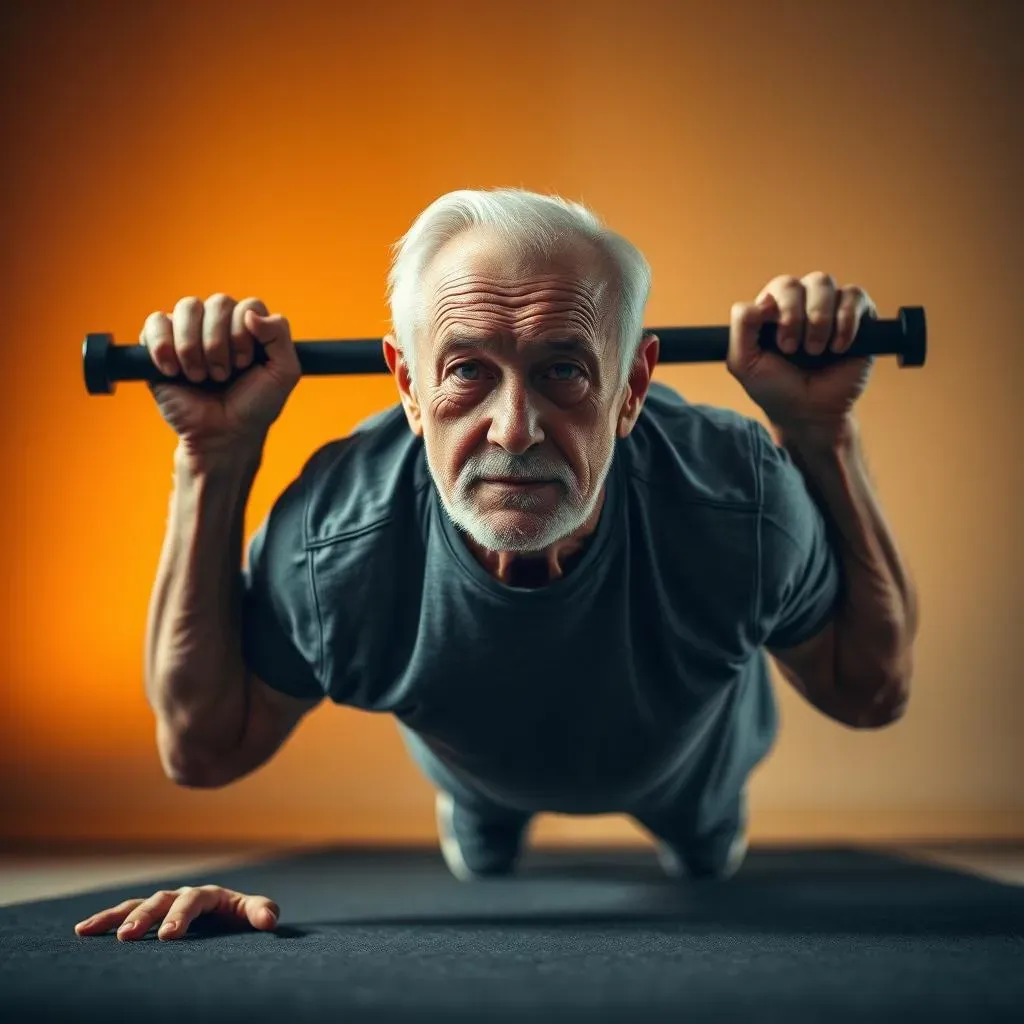
70 Year Old Man Calisthenics Workout Routine
Creating a Workout Routine
A well-structured workout routine is essential for achieving fitness goals, especially for seniors. When creating a calisthenics workout routine for a 70 year old man, it's crucial to consider their fitness level, health status, and any physical limitations they may have. Begin by setting realistic goals, such as improving strength, flexibility, or endurance, and create a routine that balances these goals with safety and progression.
Start with short sessions (20-30 minutes) and gradually increase the duration as fitness levels improve. Warm up with 5-10 minutes of light cardio, such as marching in place or jumping jacks, followed by dynamic stretching to loosen the muscles. Include a mix of upper body, lower body, and core exercises, ensuring each major muscle group is targeted 2-3 times per week.
Day | Exercise | Sets/Reps |
|---|---|---|
Monday (Upper Body) | Push-ups, Arm Circles, Shoulder Press | 3 sets of 10 reps |
Wednesday (Lower Body) | Squats, Calf Raises, Leg Raises | 3 sets of 10 reps |
Friday (Core) | Plank, Russian twists, Leg Raises | 3 sets of 10 reps |
Progressing Your Workout Routine
As you become more comfortable with the routine, it's essential to challenge yourself to continue making progress. Gradually increase the number of repetitions, sets, or difficulty of exercises. For example, if you're doing push-ups, try diamond push-ups or single-arm push-ups to increase the challenge.
It's also important to incorporate variety into your routine to avoid plateaus and prevent overuse injuries. Consider adding new exercises like lunges, step-ups, or balance exercises to keep your workouts engaging and prevent boredom.
- Increase repetitions by 2-3 each week
- Add weight or resistance bands to exercises
- Incorporate plyometric movements for power
Listening to Your Body
While progression is important, it's equally essential to listen to your body and rest when needed. Seniors should pay attention to their body's signals, such as pain or fatigue, and adjust their routine accordingly. Rest days are crucial for muscle recovery and growth, so ensure you have at least one or two rest days per week.
Stay hydrated throughout your workout, and consider working out with a partner or personal trainer for motivation and safety. Celebrate your achievements, no matter how small, and don't be afraid to seek medical clearance or professional guidance if you have concerns.
"Consistency and patience are key. Celebrate small victories, and don't be too proud to ask for help."
Staying Motivated and Safe with Calisthenics at 70
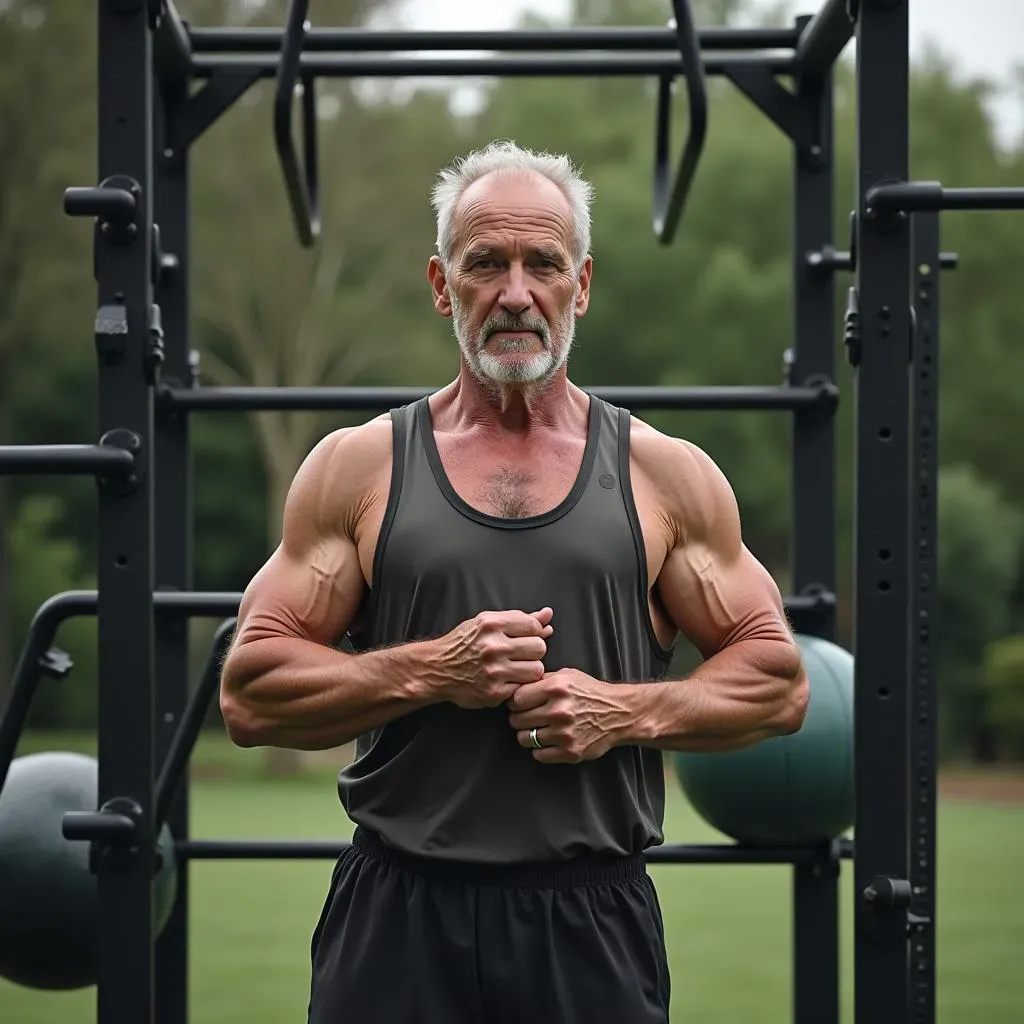
Staying Motivated and Safe with Calisthenics at 70
Staying Motivated with Calisthenics
Staying motivated is crucial when it comes to maintaining a consistent calisthenics routine, especially for seniors. One of the most effective ways to stay motivated is to set achievable goals. Break down larger goals into smaller, manageable milestones, and celebrate each success along the way. For example, if your goal is to perform 10 push-ups in a row, start by aiming for 5 and gradually increase the number as your strength improves.
Another key factor is finding a workout buddy or joining a fitness community. Exercising with others can provide accountability, support, and motivation. Look for local senior fitness groups or online communities where you can connect with others who share similar interests and goals.
- Set specific, achievable goals
- Find a workout buddy or join a fitness community
- Celebrate small victories along the way
Safety Precautions for Seniors
Safety should always be the top priority when engaging in any form of exercise, especially for seniors. Before starting any new exercise program, including calisthenics, it's essential to obtain medical clearance from your doctor. Discuss any health concerns, such as joint issues or chronic conditions, to ensure you're cleared for physical activity.
Listen to your body and rest when needed. If you experience pain or discomfort, stop the exercise immediately and consult with your healthcare provider. It's also important to maintain proper form and technique to avoid injury. Consider working with a qualified fitness professional who has experience training seniors.
Safety Tip | Description | Importance |
|---|---|---|
Obtain Medical Clearance | Consult with your doctor before starting | Ensures safety and addresses health concerns |
Listen to Your Body | Rest when needed, stop if pain occurs | Prevents injury and promotes recovery |
Proper Form and Technique | Use correct form to avoid injury | Reduces risk of injury, ensures effectiveness |
By following these safety precautions and staying motivated, you can enjoy the many benefits of calisthenics while minimizing the risk of injury. Remember, consistency and patience are key. Celebrate small victories, and don't be afraid to ask for help when needed.
"Consistency and patience are key. Celebrate small victories, and don't be afraid to ask for help."
Conclusion
In conclusion, calisthenics for 70 year old men is a powerful tool for maintaining strength, mobility, and independence. By incorporating low-impact exercises like bodyweight squats, seated leg raises, and wall push-ups into a regular workout routine, seniors can improve their overall health and enhance their quality of life. Remember to always consult with a healthcare professional before starting any new exercise program and to listen to your body, only doing what feels comfortable and safe. With patience, consistency, and dedication, 70 year old men can reap the rewards of calisthenics and enjoy a stronger, healthier life. So why not get started today and experience the transformative power of 70 year old man calisthenics for yourself?
